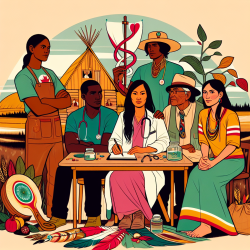Introduction
Participatory research (PR) is a transformative approach that emphasizes collaboration between researchers and communities. This method is particularly beneficial in health-related research involving American Indian and Alaska Native (AIAN) communities. A recent scoping review titled Health-Related Participatory Research in American Indian and Alaska Native Communities: A Scoping Review provides valuable insights into how PR can enhance community engagement and improve outcomes, especially for children.
Key Findings from the Review
The scoping review analyzed over 10,000 data points from 178 articles to assess the state of PR in AIAN communities. Here are some of the critical findings:
- Community engagement varied across study components, with 76% of articles reporting community participation in research-related meetings.
- Only 27% of articles reported community involvement in the initiation of research, indicating a need for greater community engagement from the outset.
- 88% of articles utilized community-level tools to guide or regulate research, showcasing the importance of community oversight.
- 82% of articles described some form of cultural adaptation, highlighting the necessity of tailoring research to fit cultural contexts.
Implications for Practitioners
For practitioners working with AIAN communities, the review underscores the importance of involving community members early in the research process. This involvement can lead to more relevant research questions and culturally appropriate methodologies, ultimately improving the quality and impact of the research.
Practitioners are encouraged to adopt the following strategies:
- Early Engagement: Involve community members in the initiation and design phases to ensure the research addresses community needs.
- Cultural Adaptation: Tailor interventions and data collection methods to align with cultural norms and values.
- Capacity Building: Provide training for community members to enhance their research skills and empower them to take on leadership roles.
- Reporting Guidelines: Develop standardized reporting guidelines to ensure transparency and consistency in documenting community engagement.
Encouraging Further Research
While the review provides a comprehensive overview of PR in AIAN communities, it also highlights areas needing further exploration. Researchers are encouraged to investigate how different PR approaches affect study outcomes and how community characteristics influence research processes.
Future research should focus on:
- Assessing the impact of PR on health outcomes for children in AIAN communities.
- Exploring the effectiveness of various cultural adaptations in improving research participation and retention.
- Developing funding mechanisms that support the time-intensive nature of PR.
Conclusion
Participatory research holds great promise for improving health outcomes in AIAN communities, particularly for children. By fostering collaboration, cultural sensitivity, and community empowerment, practitioners can create more effective and sustainable health interventions. As we continue to explore the potential of PR, it is crucial to prioritize community voices and needs, ensuring that research benefits those it aims to serve.
To read the original research paper, please follow this link: Health-Related Participatory Research in American Indian and Alaska Native Communities: A Scoping Review.










